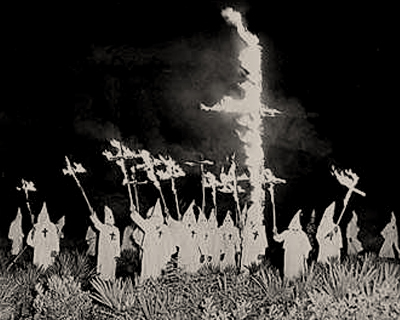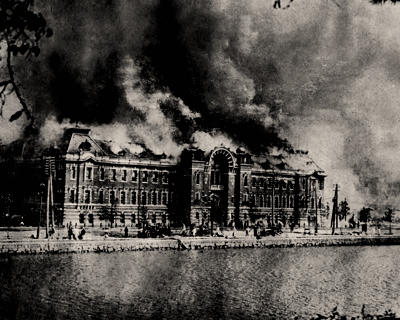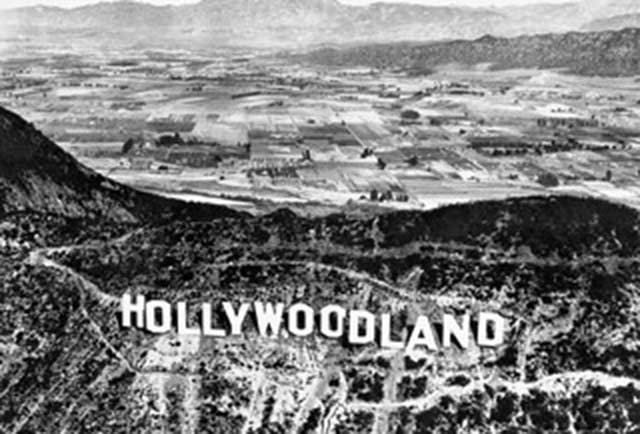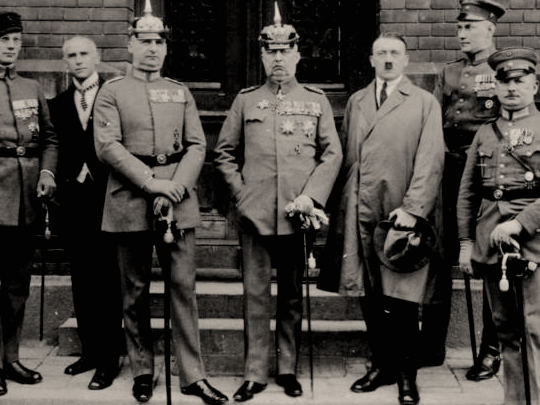German Federal Archives / Wikimedia Commons / CC-BY-SA-3.0 / GFDL
1 – Adolf Hitler’s Beer Hall Putsch Fails in Munich
The Beer Hall Putsch was a failed coup attempt by the Nazi Party leader Adolf Hitler, along with Erich Ludendorff and other ‘Kampfbund’ leaders, to seize power in Munich, Bavaria, on 8–9 November 1923.
About two thousand men marched to the centre of Munich, where they confronted the police, which resulted in the death of 16 Nazis and four policemen. Hitler himself was wounded during the clash.
After two days, Hitler was arrested and charged with treason. From Hitler’s perspective, there were three positive benefits from this attempt to seize power unlawfully.
First, the putsch brought Hitler to the attention of the German nation and generated front-page headlines in newspapers around the world.
His arrest was followed by a 24-day trial, which was widely publicized and gave Hitler a platform to publicize his nationalist sentiment to the nation. Hitler was found guilty of treason and sentenced to five years in Landsberg Prison.
The second benefit to Hitler was that he used his time in prison to produce ‘Mein Kampf’, which was dictated to his fellow prisoner, Rudolf Hess. On 20 December 1924, having served only nine months, Hitler was released.
The final benefit that accrued to Hitler was the insight that the path to power was through legitimate means rather than revolution or force.
Accordingly, the most significant outcome of the putsch was a decision by Hitler to change tactics, which would demand an increasing reliance on the development and furthering of Nazi propaganda.
2 – The Second Ku Klux Klan Movement in U.S. History Grows

In the early 1920s, the KKK adopted a modern business system of using full-time paid recruiters and appealed to new members as a fraternal organization, of which many examples were flourishing at the time.
The national headquarters made its profit through a monopoly of costume sales, while the organizers were paid through initiation fees. It grew rapidly nationwide at a time of prosperity.
Reflecting on the social tensions pitting urban versus rural America, it spread to every state and was prominent in many cities.
The second KKK preached “One Hundred Percent Americanism” and demanded the purification of politics, calling for strict morality and better enforcement of prohibition.
Its official rhetoric focused on the threat of the Catholic Church, using anti-Catholicism and nativism. Its appeal was directed exclusively at white Protestants; it opposed Jews, blacks, Catholics, and newly arriving Southern European groups such as Italians.
At its peak in the mid-1920s, the organization claimed to include about 15% of the nation’s eligible population, approximately 4–5 million men.
Internal divisions, criminal behavior by leaders, and external opposition brought about a collapse in membership, which had dropped to about 30,000 by 1930. Fading away for a time in the 1940s.
3 – The Great Kanto Earthquake Destroys a Third of Tokyo

The Great Kantō earthquake struck the Kantō Plain on the Japanese main island of Honshū on Saturday, September 1, 1923. Varied accounts indicate the duration of the earthquake was between four and ten minutes.
The earthquake had a magnitude of 7.9 on the moment magnitude scale, with its focus deep beneath Izu Ōshima Island in Sagami Bay.
The earthquake devastated Tokyo, the port city of Yokohama, and the surrounding prefectures of Chiba, Kanagawa, and Shizuoka, and caused widespread damage throughout the Kantō region.
Its’ force was so great in Kamakura, over 60 km from the epicenter, it moved the Great Buddha statue, which weighs about 93 tonnes, almost two feet.
Estimated casualties totaled about 142,800 deaths, including about 40,000 who went missing and were presumed dead. The damage from this natural disaster was the greatest sustained by prewar Japan.
In 1960, the government declared September 1, the anniversary of the quake, as an annual “Disaster Prevention Day”. A conclusive report in September 2004, said 105,385 deaths were confirmed in the 1923 quake.
4 – The Hollywood Sign is Officially Dedicated in the Hills above Los Angeles

The sign was first erected in 1923 and originally read “HOLLYWOODLAND.” Its purpose was to advertise the name of a new housing development in the hills above the Hollywood district of Los Angeles.
It was intended to only last a year and a half, but after the rise of American cinema in Los Angeles during the Golden Age of Hollywood, the sign became an internationally recognized symbol and was left there. It read ‘Hollywoodland’ until 1949.
It is situated on Mount Lee, in the Hollywood Hills area of the Santa Monica Mountains. The sign overlooks Hollywood, Los Angeles. “HOLLYWOOD” is spelled out in 45-foot-tall white capital letters and is 350 feet long.
The sign was a frequent target of pranks and vandalism, but it has since undergone restoration, including the installation of a security system to deter vandalism.
The sign is protected and promoted by The Trust For Public Land, a nonprofit organization.









